If you run a D2C e-commerce brand, you must have experienced this frustrating situation: You get an order, pack it carefully, manage it, and ship it to the customer, but then the package comes back to you undelivered. This is referred to as the RTO (Return-to-Origin).
RTO is a major issue for all Indian D2C E-commerce Brands, with a rate reaching 15-20% in a year. This makes it important for all brands to manage it and adopt preventive measures; otherwise, they will be under the weight of hefty costs and losses.
This has created the need for a tool that helps brands manage and prevent RTOs. In this blog, we will see the "Best RTO Reduction Tool for E-Commerce in India."
What Is RTO and Why Does It Matter?
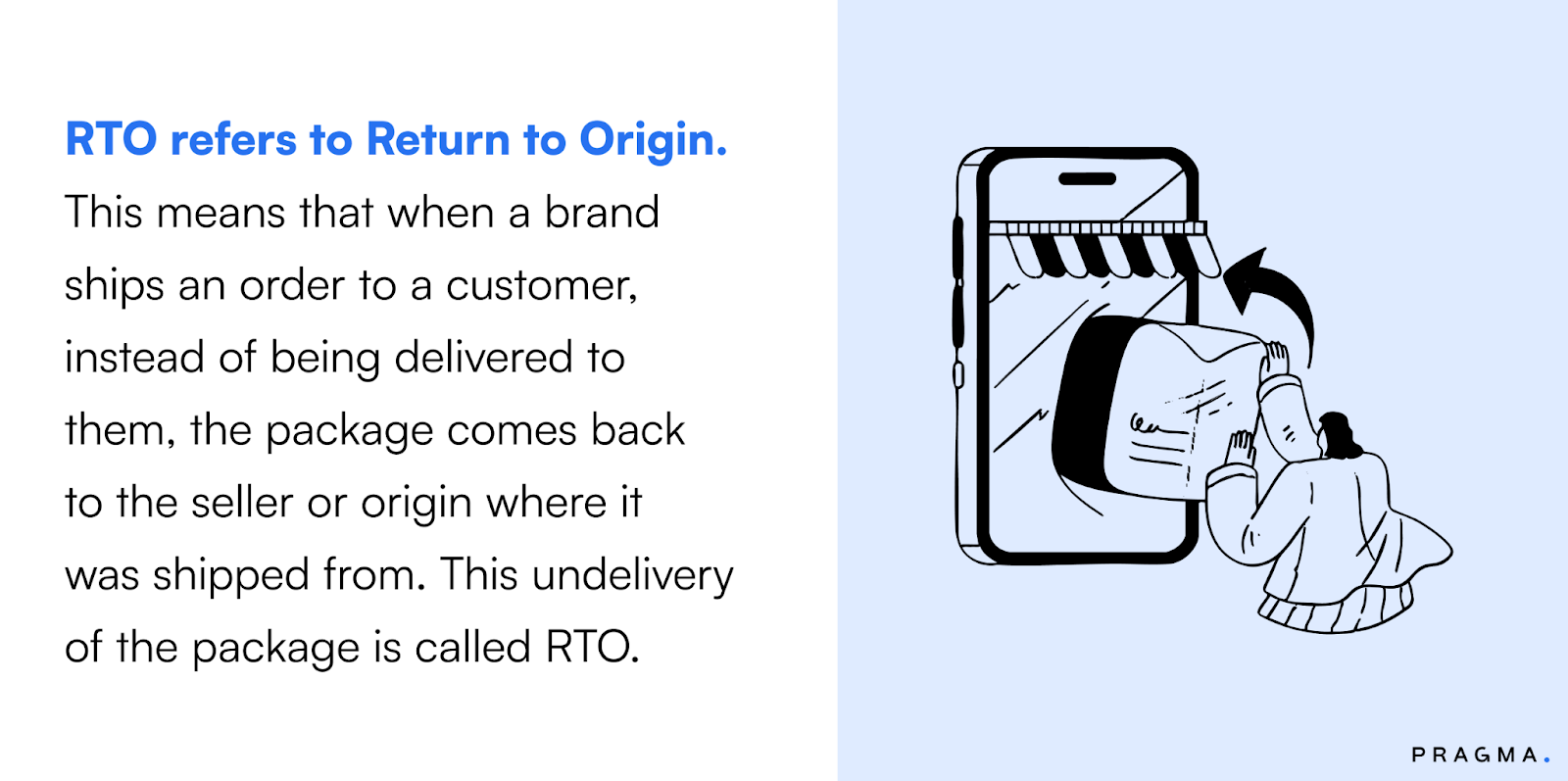
RTO refers to Return to Origin. This means that when a brand ships an order to a customer, instead of being delivered to them, the package comes back to the seller or origin where it was shipped from. This undelivery of the package is called RTO.
RTOs can happen for various reasons, such as customer unavailability, wrong address, payment issues, change of mind, or delivery failures.
You will be shocked to know about the RTO rate in the fashion and apparel industry. It is around 20-25%, and can peak at 40% in some segments.
The Cost Impact of RTO on D2C Brands in India
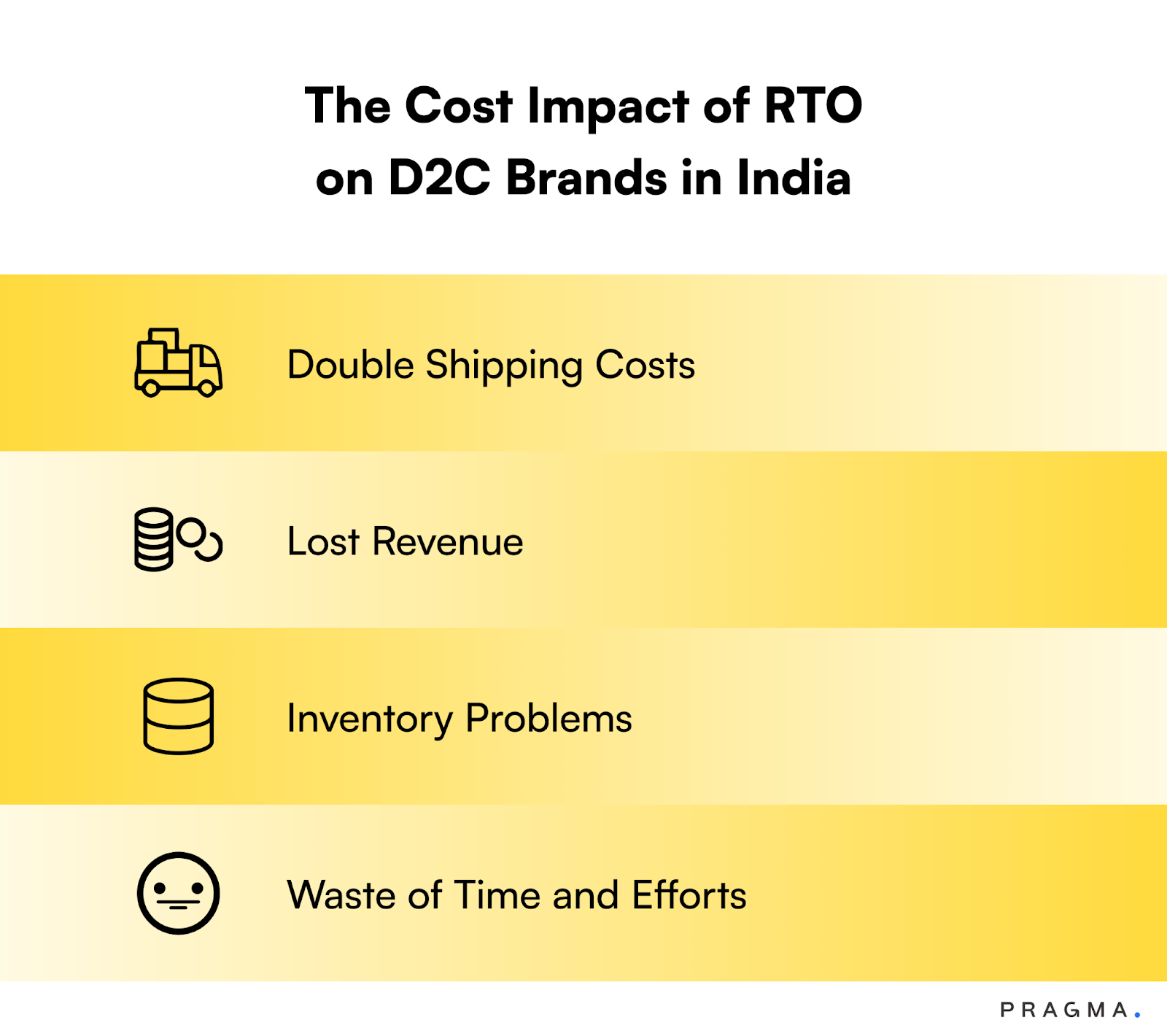
RTO is a big challenge for D2C brands and can create multiple financial impacts:
- Double Shipping Costs: When a brand ships an order through a logistics partner, it pays a charge called forward shipping. When an RTO occurs, to get back the product, it again needs to be paid for, leading to reverse shipping. Hence, the brand bears double logistics costs.
- Lost Revenue: In addition to the logistics costs, the brand also loses the sale amount, spent packaging costs, and handling costs, all leading to lost revenue.
- Inventory Problems: Returned products need to be checked, repackaged, and stored again. Some might even get damaged during the return journey.
- Waste of Time and Efforts: Your team spends time processing returns instead of focusing on growing your business.
India-Specific RTO Challenges- Why RTO Is Especially Bad Here?
Indian D2C Brands face unique challenges due to the following scenario:
- Cash on Delivery (COD) Preferences: A major part of the Indian people prefer to place COD orders rather than prepaid orders. The percentage is over 60-70%. This makes it easier to refuse delivery and leads to RTO.
- Address Problems: Most of the people at the time of placing orders entered the wrong or incomplete address, such as near the Birla Temple, etc. This confuses the delivery partners, and they might not try to reach the destination.
- Impulse Buying: Customers order on impulse but change their mind by the time the product arrives.
- Delivery Infrastructure: Remote areas often have poor last-mile connectivity. Sometimes the order just gets cancelled due to this.
Core Features in the Best RTO Reduction Tool That Actually Help to Prevent RTO
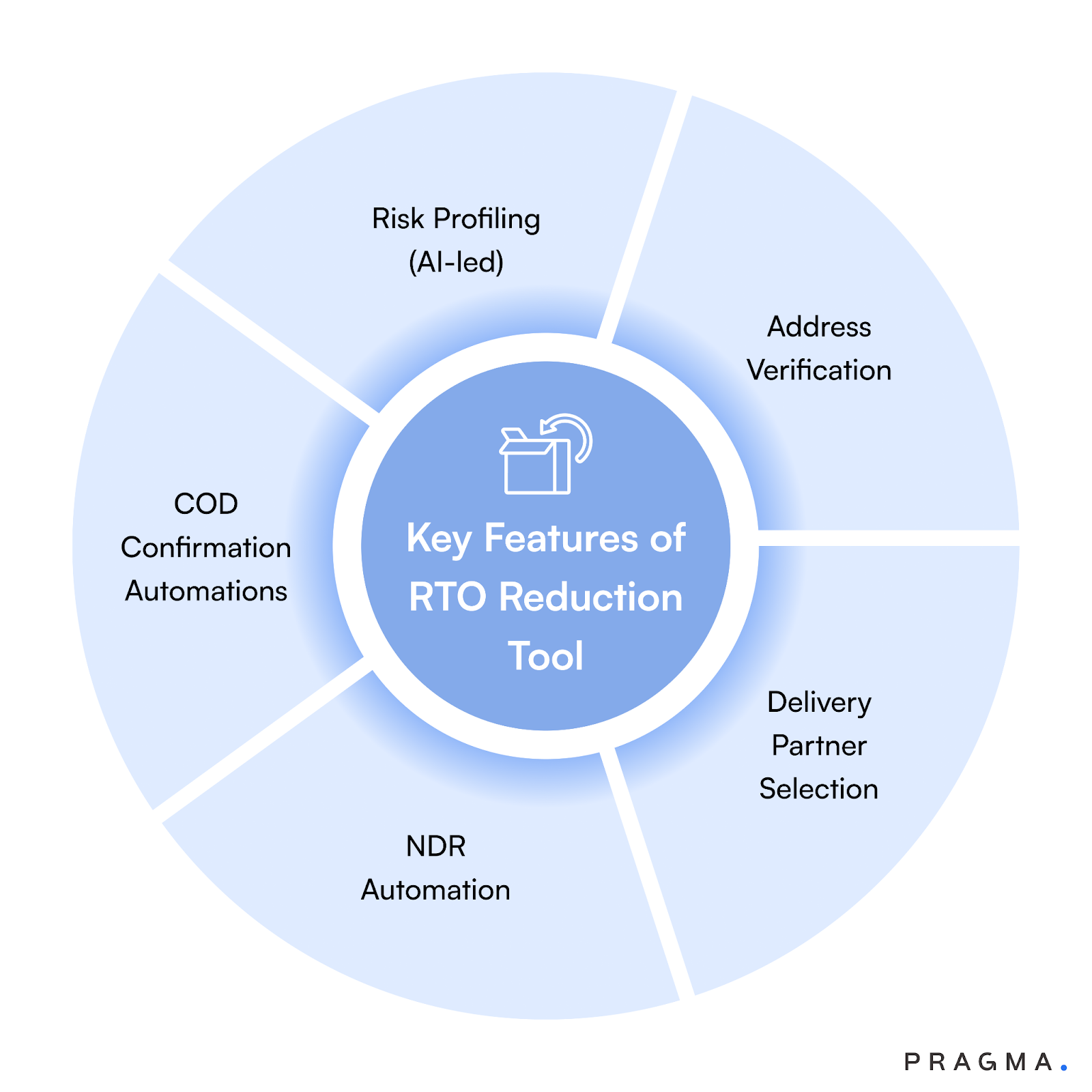
Before we look at specific tools, let's understand what features actually work to reduce returns:
1. Address Verification
The best RTO reduction tools have such a system that can check and verify the address at the time of placing the order. It can correct and validate the address or identify fake addresses. This helps brands to learn about vague orders.
2. Risk Profiling (AI-led)
As AI is trending nowadays, these RTO reduction tools help use machine learning algorithms that analyse customer behaviour, order patterns, and historical data to identify high-risk orders before shipping.
3. COD Confirmation Automations
These tools have a feature that, with the help of messaging and call automations, confirms COD orders.
4. NDR Automation
NDR means "Non-Delivery Report" - when delivery fails. Smart systems automatically:
- Reschedule delivery
- Ask customers to update their address.
- Convert COD to prepaid orders.
- Send WhatsApp updates
5. Delivery Partner Selection
Not every delivery partner performs well in all areas. It is essential to choose the best one. The best RTO reduction tools can help you choose the right delivery partner.
Top RTO Reduction Tools in India
1. Pragma (Bepragma.ai)
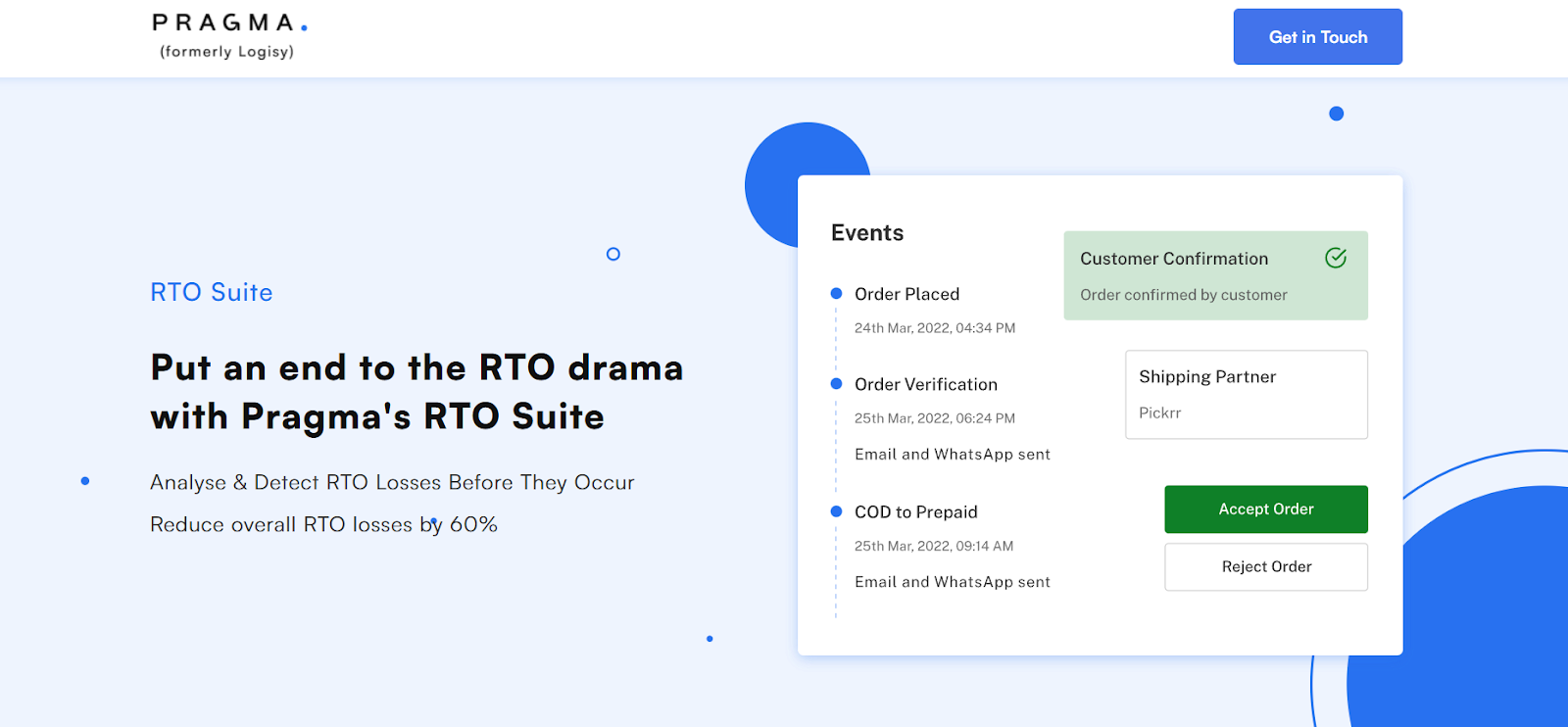
Pragma offers comprehensive RTO reduction through AI-powered risk assessment.
Key Features of Pragma
- AI-based Risk Scoring- Pragma uses customer history and data, and keeps a look at the buying behaviour of the customer to score each order. And based on such a score, it flags high-risk orders before the brand proceeds with the order.
- Automated COD Verification- Pragma make use of automated calls or messages through WhatsApp to know whether the customer really wants the product or not. This helps to get the COD orders confirmed before the brand starts the shipping process.
- Address validation and correction- Pragma RTO Suite helps to identify fake addresses, it checks whether the address is valid, whether it is serviceable or not.
- NDR management - Pragma monitors failed deliveries (NDRs) in real time, often via courier partner APIs or delivery data, so that issues are detected quickly.
- Shows the Reasons Behind RTOs- Pragma helps brands to identify the reasons behind the RTOs, so that the brand can adjust accordingly.
2. GoKwik
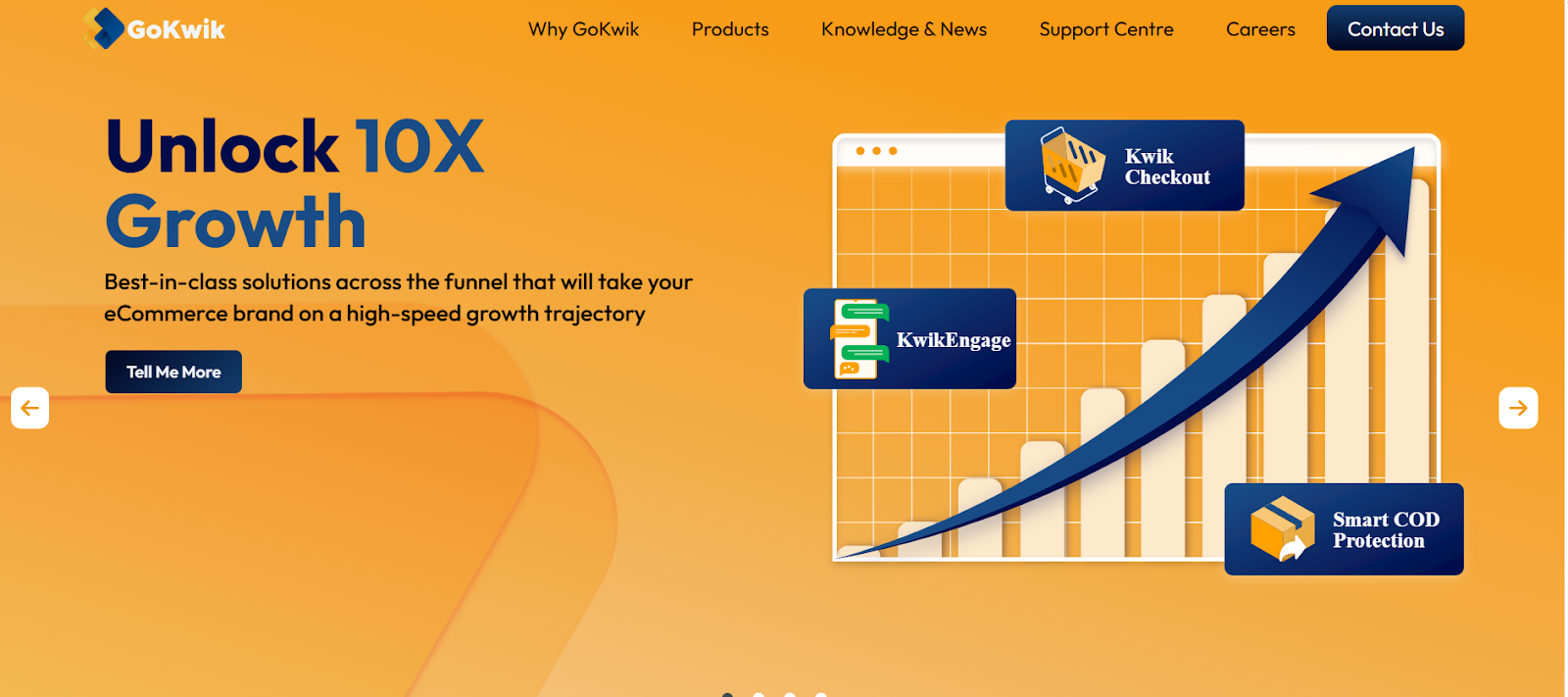
GoKwik focuses on checkout optimisation and post-purchase experience to reduce RTOs.
Key Features:
- Smart address validation
- Customer verification calls
- Checkout optimisation and more
3. Razorpay(Thirdwatch)
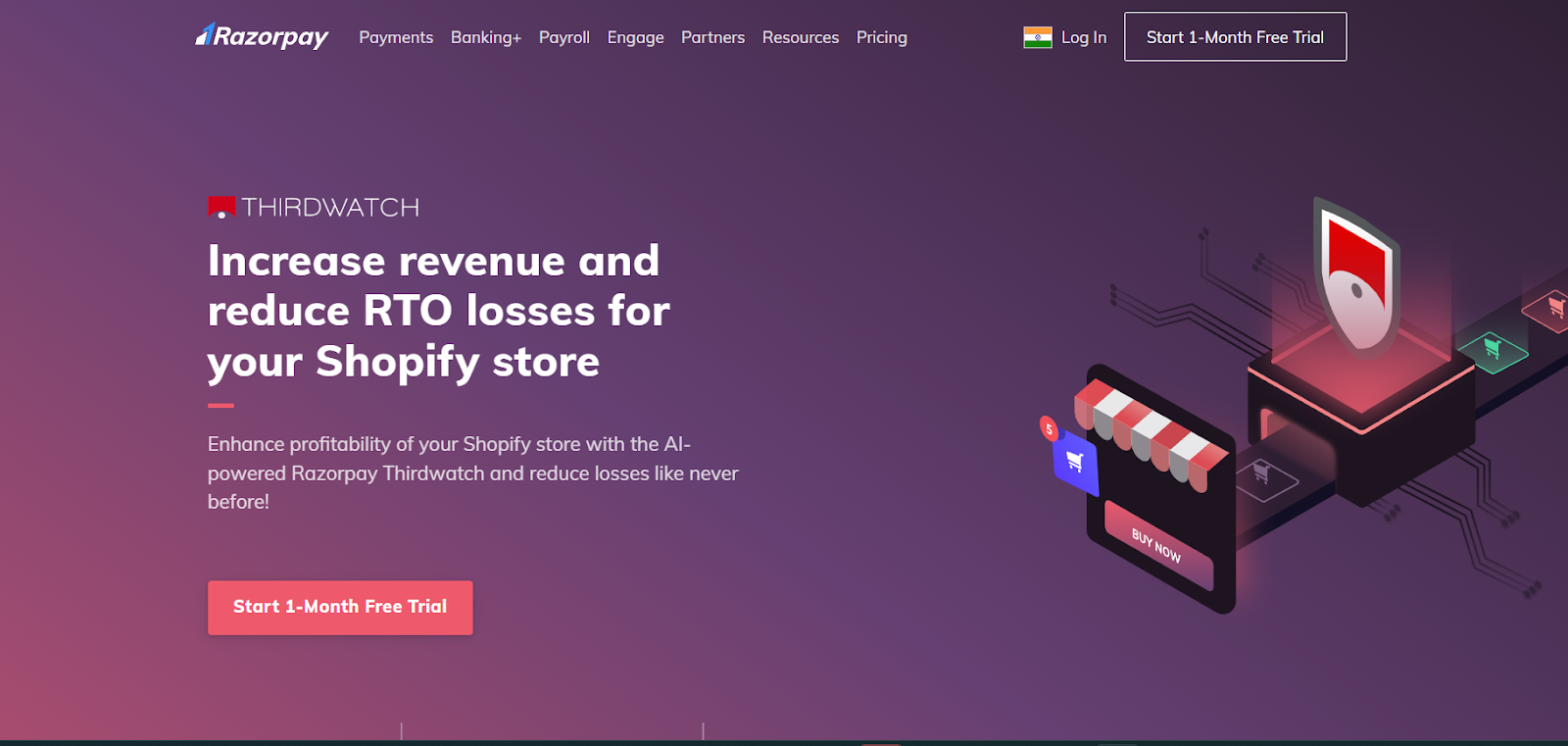
Razorpay - Thirdwatch is a type of RTO reduction tool that provides fraud detection and manages risks by identifying orders that can create problems for brands.
4. Shiprocket Sense
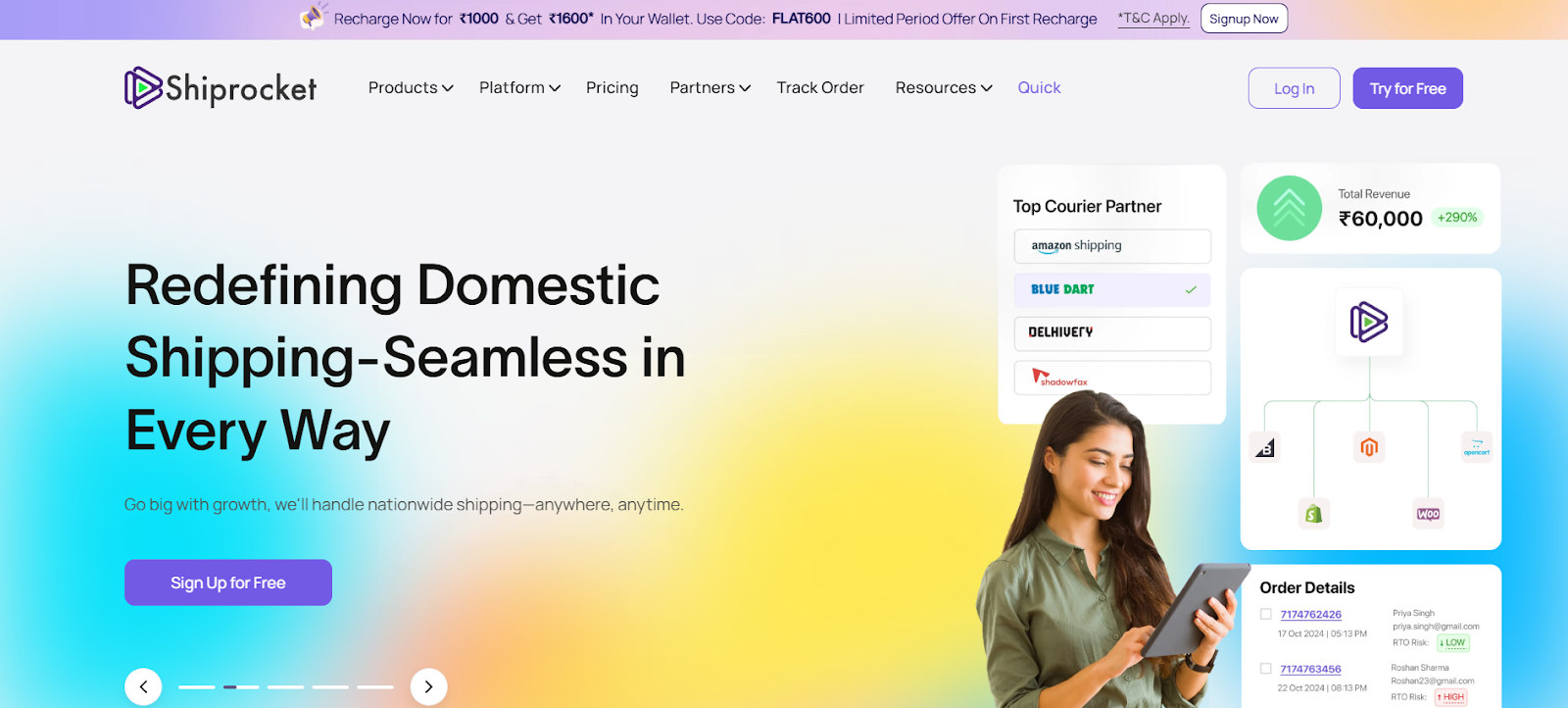
Shiprocket is an AI-powered tool that analyses shipping data to predict and prevent RTOs through intelligent routing.
5. Eshopbox RTO Suite
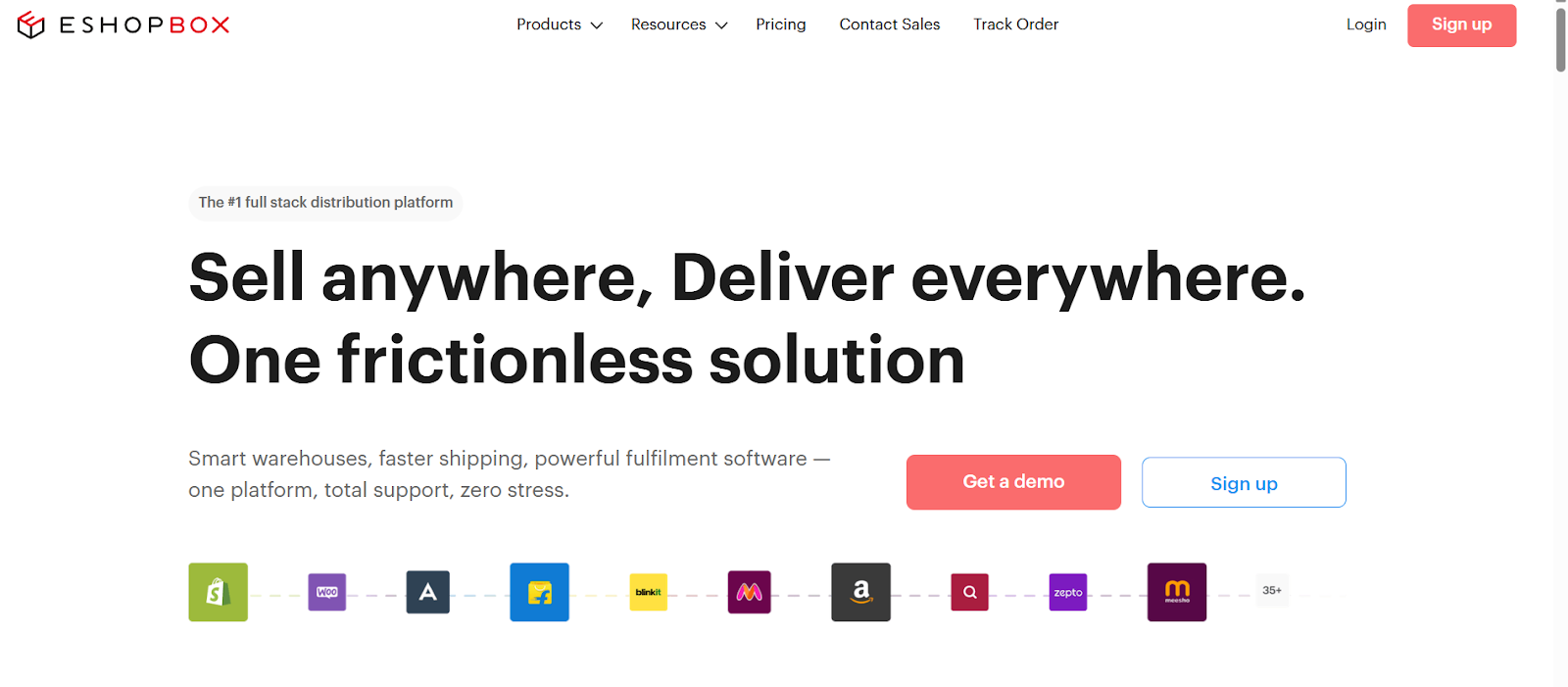
Eshopbox offers a comprehensive RTO reduction suite as part of its fulfilment platform.
6. iThink Logistics
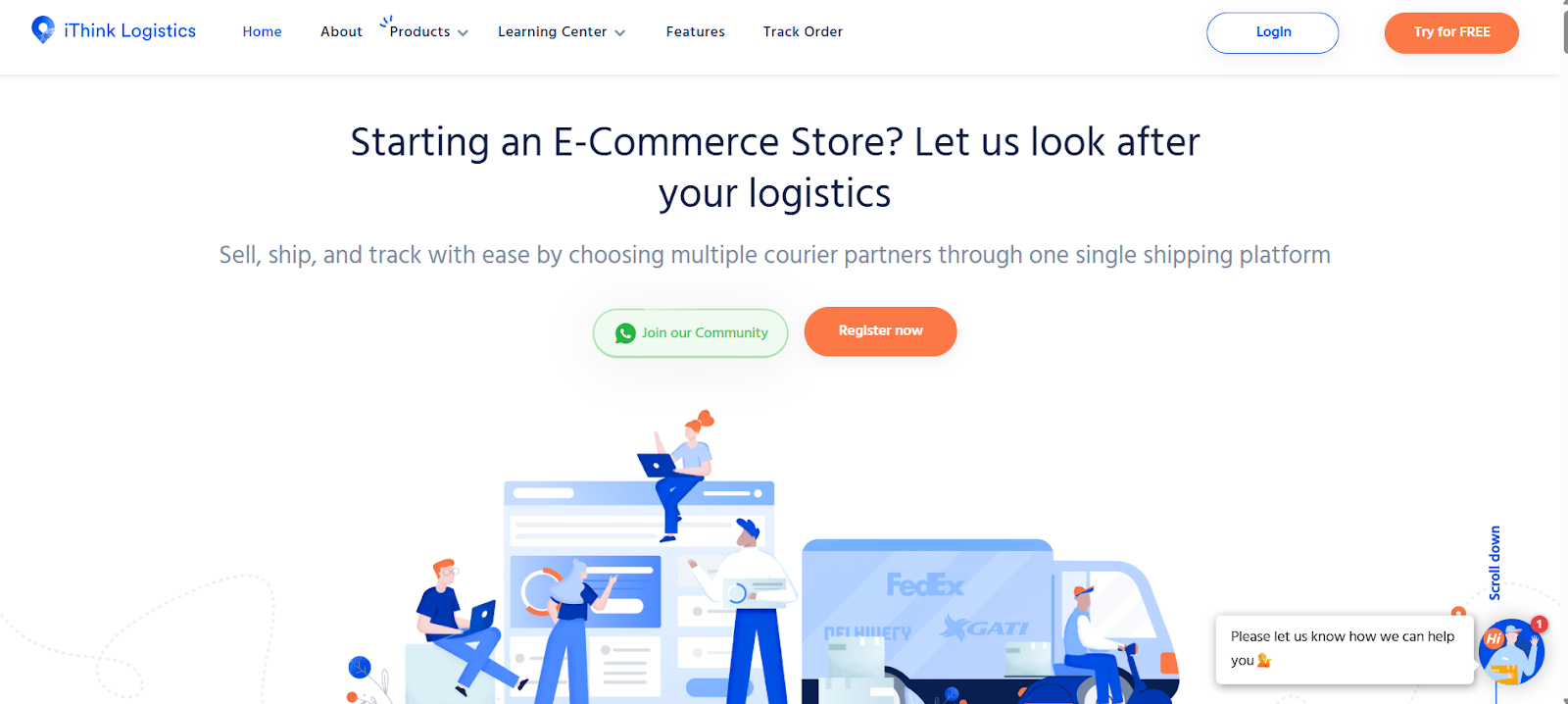
iThink offers RTO reduction through their comprehensive logistics platform with a focus on last-mile delivery optimisation.
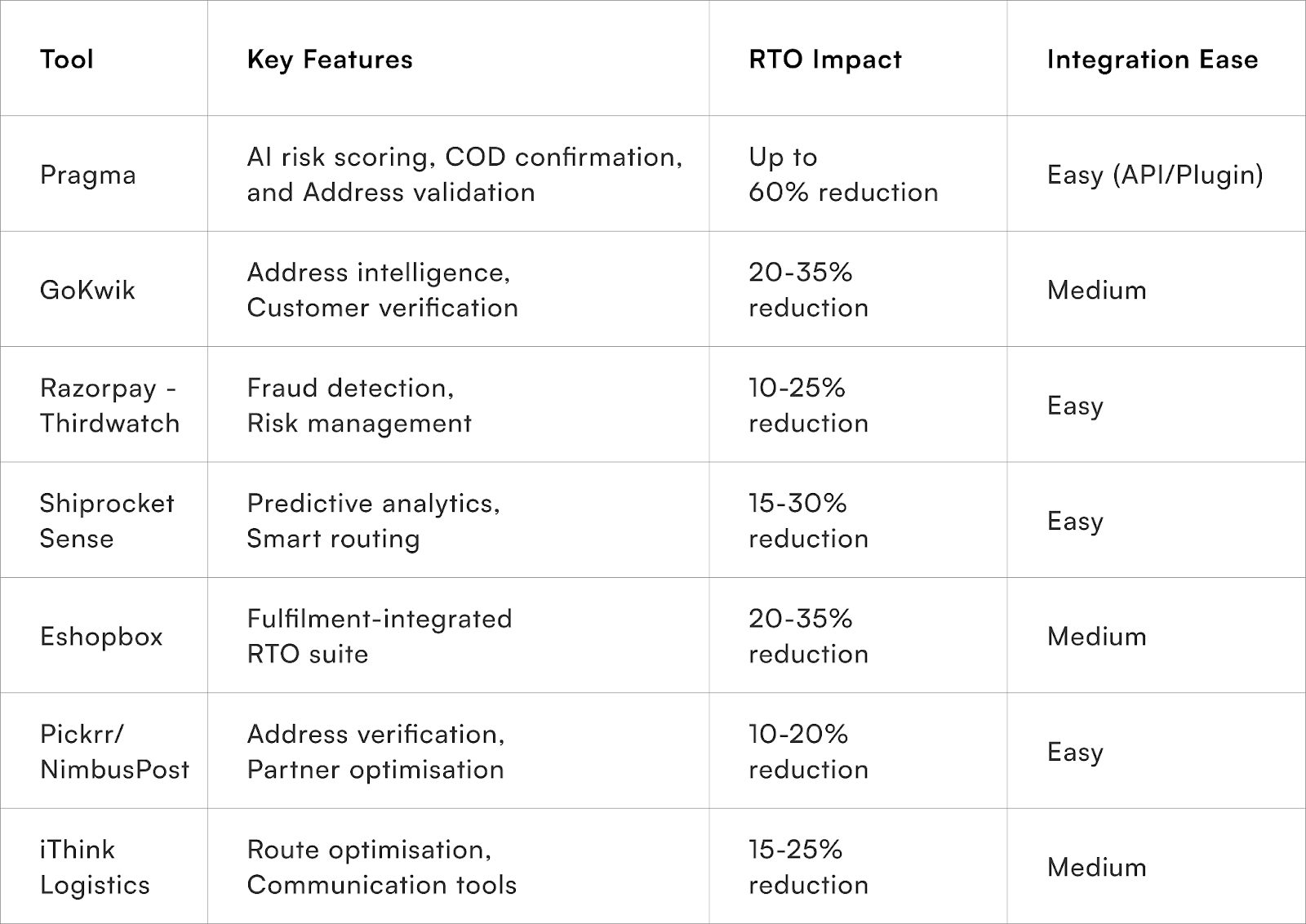
How to Select the Best RTO Reduction Tool - Implementation Tips for Indian Brands
We have seen multiple options for RTO reduction tools, but choosing the right one is essential. See how you can get the right tool for your brand:
Understand Your RTO Problem
Before selecting any tool, it is important that you know about your problem. Look at the past data and see the following things:
- What percentage of RTO is your brand facing?
- What's the reason behind your RTOs?
- What financial impact is it causing to your brand?
Match Tool to Problem
On the basis of your RTO problem, choose the tool. For example, if you are facing a high number of RTOs due to wrong addresses or COD orders being rejected, then choose Pragma's RTO Suite.
Do Pilot Testing
Always start with a small percentage of orders. Test during different seasons so that you can know the results better in different scenarios.
Focus on Proper Integration
While selecting any tool, carefully look to see whether it aligns with your present system or not. Train your staff on how to use the systems.
Additional Best Practices To Reduce RTOs (Beyond Tools)
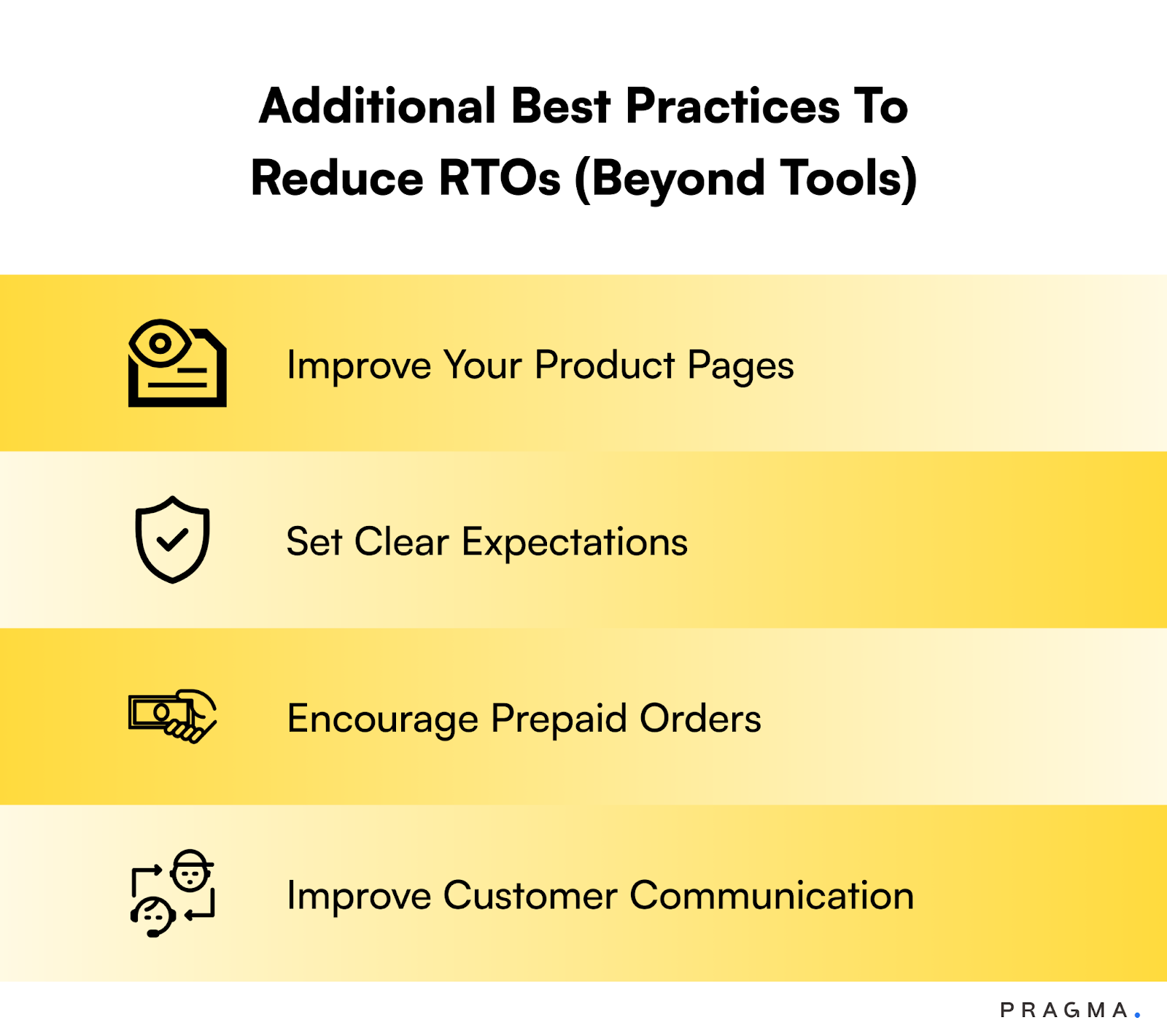
1. Improve Your Product Pages
One of the major reasons behind RTOs is customer dissatisfaction, and this can be due to wrong sizes, wrong product images, etc. However, if the brands have proper product descriptions, this might be reduced.
What brands should do to improve?
- They should add detailed and correct size charts with proper measurements.
- There should be high-quality images of products from multiple angles.
- Brands should include customer reviews and photos; this helps to build trust.
2. Set Clear Expectations
- At the time of order, brands should clearly mention the delivery timelines.
- They must show shipping charges before checkout so that customers know about them before placing the order.
- Send the order confirmation immediately to the customer.
- The return policy should be disclosed to the customer up front.
3. Encourage Prepaid Orders
To reduce RTOs, brands should try to convert the COD orders into prepaid ones and try to get more of them.
- They can offer discounts for online payments. This encourages the customer to pay at that moment.
- They should provide multiple payment options (UPI, cards, wallets).
- Show "Cash on Delivery charges" separately.
- It can create urgency in the mind of the customer by giving them limited-time offers.
4. Improve Customer Communication
RTOs can be reduced with the help of proper communication. What brands can do is:
- Send SMS/WhatsApp updates at every step
- Share delivery partner contact details
- Allow customers to reschedule delivery
- Provide an easy customer support contact
Case Study: E‑commerce Brand That Reduced RTO
A fast-growing D2C skincare brand was struggling with high return-to-origin (RTO) rates, particularly from cash-on-delivery (COD) orders; nearly 35% of those orders were being returned.
To handle the problem, the brand adopted Pragma’s RTO Management Suite, which offered them:
- COD order confirmation and customer verification at the time of placing orders by the customer.
- AI-powered risk assessment for each order
- Automated payment follow-ups
- Address validation tools
- Real-time order updates
And the results are amazing!
- RTO rates fell by 60%
- Non-delivery reports dropped by 35%–40%
- Prepaid order share rose by 20%
- Successful deliveries increased by 25%
- Shipping expenses were reduced, resulting in improved profit margins
How Pragma Supports RTO Reduction?
Pragma becomes the best RTO reduction tool for the following reasons:
1. Built for the Indian Market
Pragma is specially built for the Indian E-Commerce Market. It clearly understands the Indian customer behaviour. Also, it works with all major Indian logistics partners.
2. Provides Best Solutions
Pragma RTO Suite is one of the best RTO reduction tools that provides:
- AI-based Risk Scoring
- COD Verification
- Address validation
- NDR (Non-Delivery Report) Management
- COD to Prepaid Conversion Flows
3. Comprehensive Approach
- Prevents RTO at every stage (pre-order, during shipping, at delivery)
- Combines multiple solutions in one platform
- Provides actionable insights, not just data
4. Proven Results
- Average 60% reduction in RTO rates
- 35% improvement in delivery success
- ROI positive within 4-8 weeks
All the above points clearly state why Pragma is the best RTO Reduction tool for the Indian E-Commerce Market.
To Wrap It Up
As you are aware, RTO is a major problem for all E-commerce D2C Brands, but proper management and handling can reduce the RTO rates and hence save a significant portion of costs. With the right RTO reduction tool and approach, brands can:
- Cut your RTO rates by 60%
- Save thousands of rupees monthly
- Improve customer satisfaction
- Can focus on the brand's growth
To handle and manage your RTOs properly and efficiently, Pragma is here for all D2C E-Commerce Brands.

FAQs (Frequently Asked Questions On Best RTO Reduction Tool for E-commerce in India)
1. What are some tools that help reduce Return to Origin (RTO) for Indian D2C brands?
- Pragma (RTO Suite + 1Checkout + WhatsApp Business Suite + Return Management) — offers an integrated approach that prevents RTO at checkout, validates risky orders, manages NDRs, and streamlines returns, tailored for Indian D2C.
- Delhivery’s AI-powered RTO Predictor — uses machine learning to assess risk and reduce RTOs by up to ~20%.
- GoKwik — offers analytics and interventions that helped brands save on RTO losses, including predictive checks for COD orders and improving delivery conversion.
- Eshopbox RTO Reduction Suite — identifies high-risk orders, flags them, automates NDR resolution, and provides data analytics.
- Shiprocket RTO Management Tools — including RTO prediction, automated notifications, WhatsApp communication and an NDR panel.
2. How does Delhivery’s RTO Predictor tool work?
It analyses large volumes of historical shipment and delivery data (billions of data points), applies machine learning to detect high risk for COD/non-acceptance, and enables brands to act early (e.g. confirm COD, disable COD for risky orders). It claims to reduce RTO by ~20%.
3. What features make an RTO reduction tool effective?
Key features include:
- Pragma’s integrated stack: checkout validation, COD risk scoring, WhatsApp confirmations, NDR automation, and returns management.
- Risk scoring / prediction for each order (using address, past behaviour, payment mode)
- Real-time address verification and correction at checkout or just before dispatch
- Automated COD confirmation (SMS/WhatsApp/IVR) for first-time buyers or high-value COD orders
- NDR (Non-Delivery Report) management dashboards + automated follow-ups
- Analytics and reporting to spot problem zones (high-RTO pincodes, courier lanes) and enable rule-based COD limits or fallbacks.
4. What kind of RTO reduction percentages have brands achieved using these tools?
- Pragma → D2C brands using Pragma’s RTO Suite + 1Checkout report reductions of up to 30%, especially for COD-heavy orders.
- Delhivery’s tool has helped reduce RTOs by up to 20% for several D2C brands.
- GoKwik reports ~18% reduction in COD-based RTOs, and Rs 130 crore saved across brands via its interventions.
- Shiprocket claims ability to reduce RTO losses by up to 45% with its RTO-management tools.
5. How do I choose the right RTO reduction tool for my D2C brand?
Consider these criteria:
- Pragma’s ecosystem advantage → direct checkout integration (1Checkout), NDR automation, CRM and returns in one stack.
- Integration: Does it work with your e-commerce platform / checkout / logistics partners?
- Data availability: Do you have enough historical order / delivery data for risk prediction?
- Flexibility in COD rules: Tool should allow disabling COD for risky orders, or offering incentives for prepaid.
- Communication workflows: Ability to send confirmations, alerts, reminders via WhatsApp/SMS.
- Cost vs ROI: Some tools charge per order or subscription; calculate savings from reduced RTO vs tool cost.
- Support & analytics: Good dashboards, real-time alerts, ability to segment by region/pincode/courier.
6. Are there trade-offs or limitations when using RTO reduction tools?
Yes. Some things to watch out for:
- Even Pragma and other tools risk losing COD customers if COD is disabled too aggressively.
- False positives: orders flagged “high risk” may sometimes be valid, leading to friction.
- Cost of implementing verification / OTP / communication may add overhead.
- Dependence on courier accuracy and external factors (last-mile delivery, customer availability).
7. Do any of these tools provide “prevention before dispatch” mechanisms?
Yes. For example:
- Pragma → Prevents RTO at checkout via address validation, COD filters, and WhatsApp confirmations.
- Delhivery’s RTO Predictor can be integrated into checkout so COD is hidden or modified for risky orders.
- GoKwik uses pre-order interventions like COD captcha, confirmation prompts, prepaid nudges.
8. Can smaller / newer brands benefit from these tools?
Definitely. Even if order volume is not massive, tools with lower per-order fees or basic RTO-prediction features help. For small brands: start with features like automated address validation, COD confirmations, and follow-ups.
- Pragma offers modular adoption — smaller brands can begin with address validation + COD confirmations, and expand into CRM/returns as they grow.
- Tools like Shiprocket and GoKwik also have scalable models.
Talk to our experts for a customised solution that can maximise your sales funnel
Book a demo




.png)